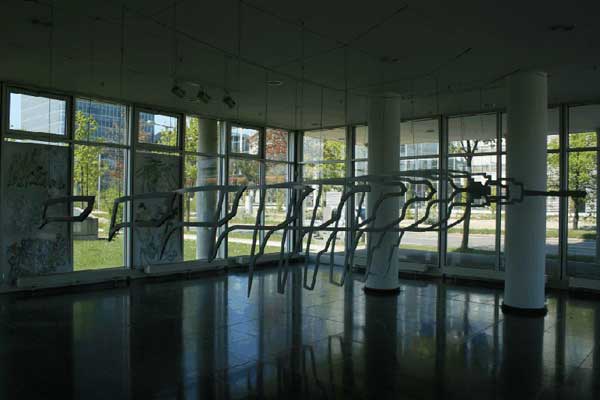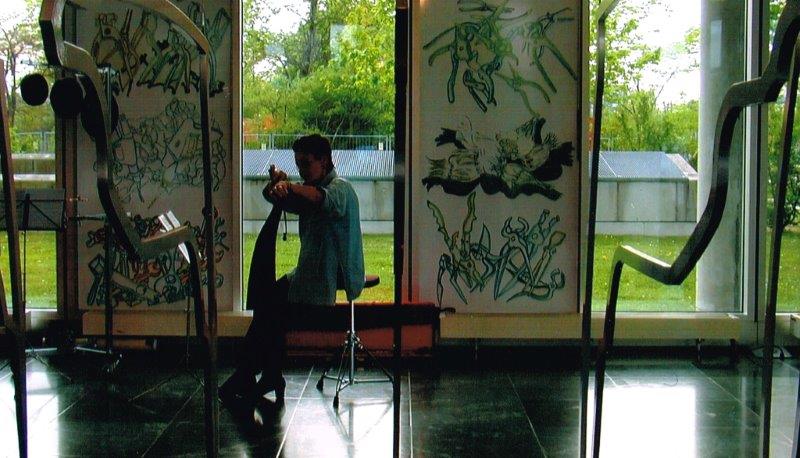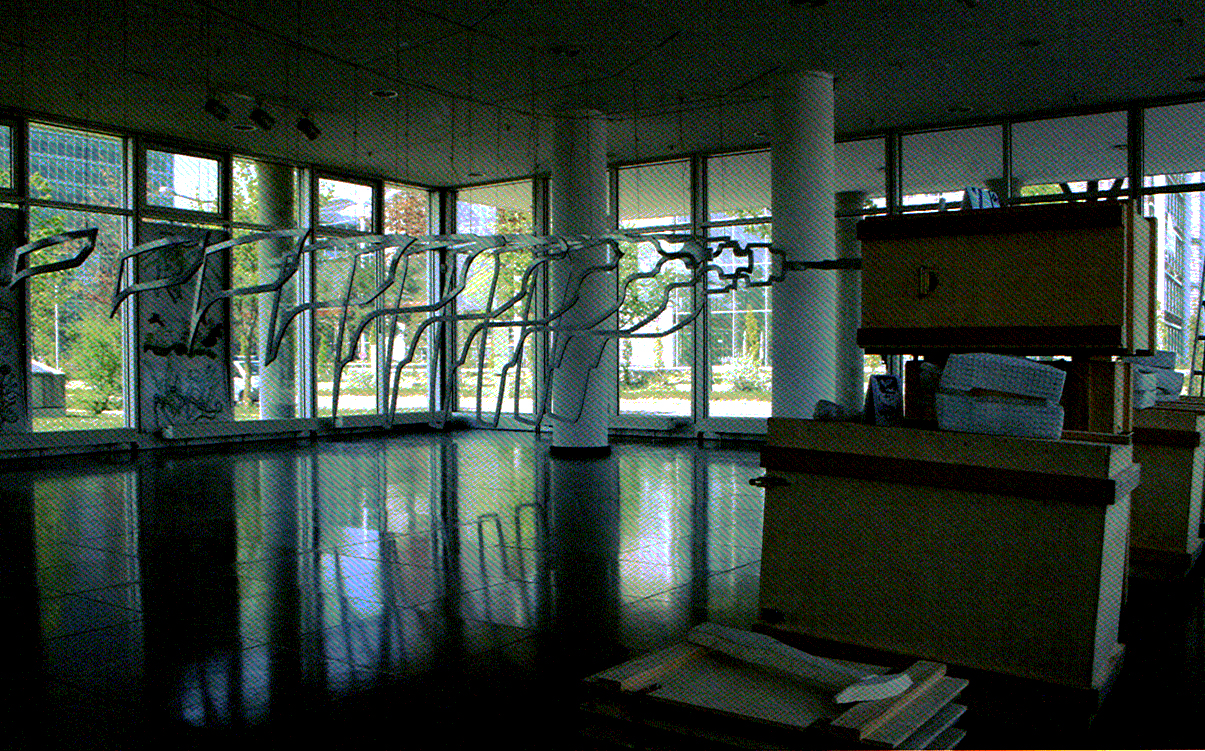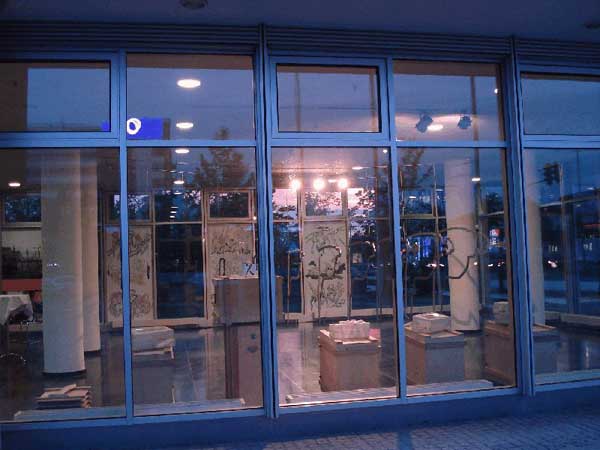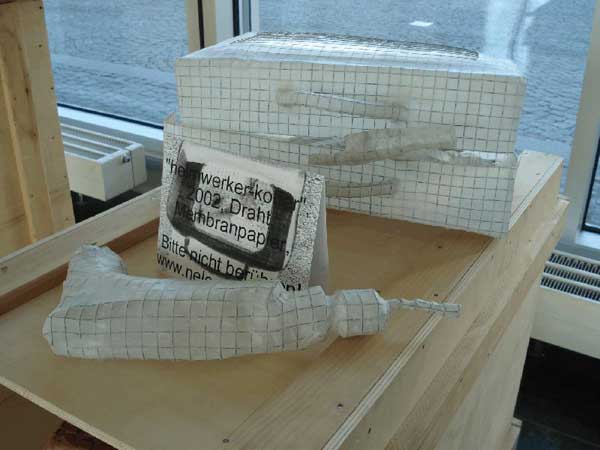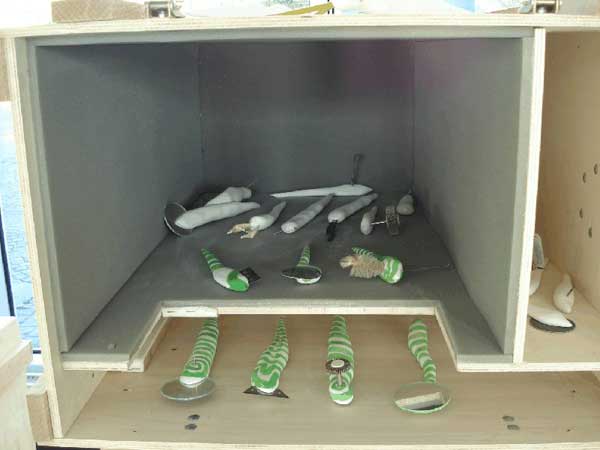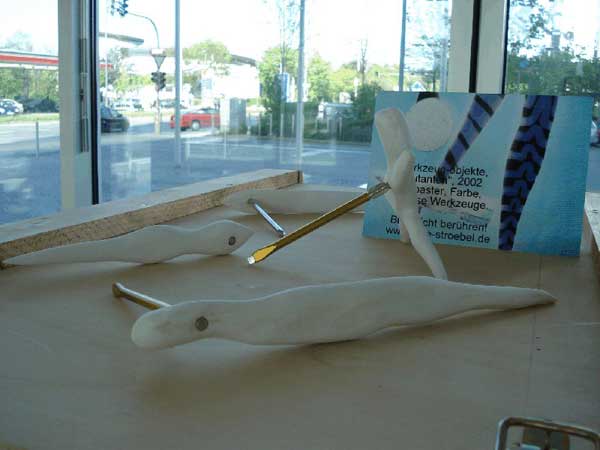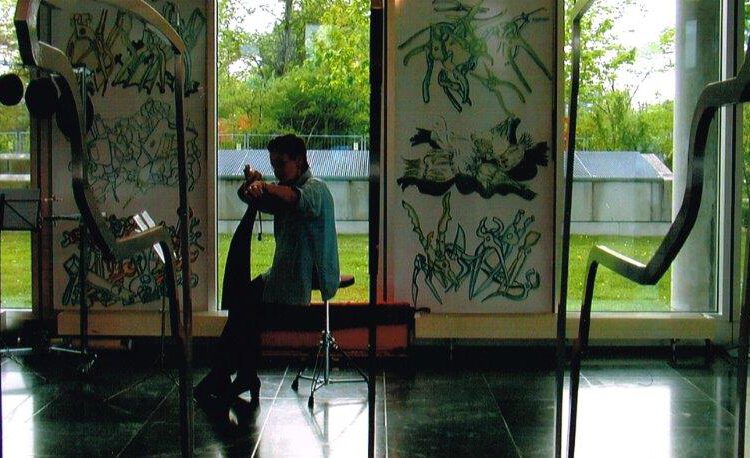
repairS oF tHe WorlD – on tHe Spot
Speech on the exhibition at AWM 24.04.07from Wilhelm Warning |
||
|
Good evening ladies and gentlemen! We are standing in the hall of the ultra-modern waste management plant of a metropolis of millions. Extraordinarily complicated processes are controlled here, and very successfully at that, which requires what I imagine as a layman to be differentiated and efficient management on the part of all employees, and extensive logistics, as well as highly complex technical processes. For us, this is a matter of course. On Thursdays and Fridays the garbage truck comes to my street and takes away what we have thrown away. You can almost set the clock by it. But when I think about how many tons of garbage are moved every day, what an infinite amount of processes, manual operations, and certainly also repairs are involved, it could make you dizzy. Seen exactly, the waste management office actually carries out a huge repair: It leads back, as it were, into a recycling, a transformation, what is no longer usable. This is because the Latin term “reparare” means nothing other than “renew, restore” and can also be translated as “supplement”. The related word “paratio” means preparation, and “paratus” can be translated as “ready”, or as “ready”, while the prefix “re” means “back”. So when I re-par, I’m making something ready again. And that is exactly what is happening here. Waste is returned to be “ready” for something else. The term “recycling” suggests itself, and with it the thought of conversion, reuse and further utilization. Something that no longer seems functional is changed and thus given a new, and sometimes, cleaned and repaired, the old function. It is not by chance that the Office publishes a very useful Second-Hand guide. I don’t want to continue these thoughts for too long, although they are closely related to Nele Ströbel’s approach and to her motives why she has been working on a project like “Repairs of the World” for such a long time and, related to that, to the connection between creativity and repair. Because, quite clearly, anyone who repairs successfully has to be creative. Not only the artists, who are often called when something unsuccessful is to be repaired: In the concrete courtyard of the fountain, color into the gray monotony – often they are to correct architectural or planning blunders. This can only be done with creativity, which is also required in other cases. Just think of the US TV series hero who, in desperate situations, knows how to transform the simplest, everyday things into high-tech gadgets with a little thought, and thus creates new paths, or ways out. And sometimes one wishes for many such everyday heroes in our world, in view of its quite threatening condition. Which brings us back to the Waste Management Office, where this is exactly what we are always asked to do: repair the world in which we live, such as waste separation, waste avoidance, heat generation, and so on. Nele Ströbel has cunningly demonstrated how that very trash can also be used to repair a world. In her “imbenge – dreamhouse” project, she and colleagues created braided works of art from old telephone wires that the digitized postal service no longer needs. And together with South African masters of this art, the art of weaving. A house was thus created, a pavilion-like woven colorful hut – a “dreamhouse”, a “dream house” or a house for dreams. In this “Dreamhouse” the wire is used physically. It loses its abstract dimension, which it had as a telephone connecting cable, and becomes a woven image, a poetic color line, a tangled condensation, clarifies narration, brings memories to mind, becomes an intricate path, a novel-like line that appears, disappears, intertwines with others, reappears, knots itself again. Here, thanks to the traditional Zulu braiding art, Imbenge, the wire becomes the carrier of dreams. The fantasies, the imaginations, the imagined, dreamed worlds. It even becomes a poetic guide through times, back into deep pasts or distant futures. Dreaming gods created the world, once, in those unthinkable days, and it is necessary to renew it through the power of dreaming and poetic naming. We are still with the art and the repair of the world. And we have landed on an age-old topic of humanity. Strictly speaking, it is the topic par excellence. Because it digs deep into the initial reasons. So allow me to take you on a little journey into the equally inexhaustible and dark depths of the past. Let’s travel in our minds to Spain, to Andalusia. A small, winding road winds up in steep twists and turns, the last 300 meters a narrow path leads to the entrance. The area seems to be deserted. Silence reigns, only the wind blowing up from the valley rustles in the summer withered tufts of grass between sun-hot stones and dark boulders. From here, the view can wander far and wide, brownish reddish hill ranges lost in the blue haze of the distance. We step out of glistening light into velvety darkness. The cave swallows every sound. The light cone of the lamp captures bizarre shapes, grown over millions of years, sintered columns, petrified waterfalls. And traces of people who have repeatedly retreated to this cave in prehistoric times. Traces of smoke and soot, long since covered by lime, testify to fireplaces inside the mountain and have blackened the wall to the thickness of a man. In the glow of light that glides over the rock, an image is suddenly visible. Result of a creative process. About 15 000 years ago, a man worked in the night-black cave, created what we now call a work of art. With a few sure, elegant lines, he or she has drawn a horse’s head, added color accents of yellow ocher and red iron oxide, colors that characterize the landscape outside. A few steps further a deer, a goat, deeper in the cave, behind the bend, are depicted pregnant animals, bold, almost abstract. Until the 9th millennium – six thousand years – people kept coming to the cave and painting pictures on the walls, including representations of themselves. Black creatures in stick figure style, one is just drawing the bow, raising it to aim or to shoot the arrow. They were obviously hunters. Traces of living life can be seen in the mountain and cave solitude. People who presumably felt happiness and suffering, who, like us, drew from the fullness of memory in the course of their lives, who loved and perhaps also lived full of desire, who suffered and died. They created the images they carried, images that remained like messages. They are flashes from the dark past, arcs across millennia. What prompted them to create images here in the night-black cave in the glow of flickering light, we can only assume, it has not been handed down. In any case, in the creative process, in the depiction of animals and people, one’s own existence in the all-encompassing world in which one exists was named and thus ordered. There is much to suggest that the cleft of the earth served as a religious place of worship, where animal spirits were invoked in what we would today call shamanic rites, and hunting luck and fertility were invoked. That, to put it differently, since people asked for something in any case, with possible animal ancestors or spirits. That they, to turn it again, tried to repair that disturbance which their hunt caused, that is, the destruction of life. The world disturbed by human actions should be renewed. In any case, we know from relevant ethnological and religious studies that in the telling of the myth, the primordial beginning, the world is renewed in the here and now. Repaired. And that art and religion are closely linked here. This is exactly what happened and happens in such rituals: The renewal of the world whose order has been disturbed. Connected with it is a purification, and from this purification, from the chaos the cosmos grows again. Cosmos is the Greek word for order. Someone who repairs, fixes, we also say. You see how deeply embedded in human history is this idea of repairing the world. It is a “religious” process in the truest sense of the word. Religio means nothing other than “reconnection”. The idea of sacrifice also belongs here. Much could be said and explained about this, but it would go beyond the scope of this short introduction. Therefore, I would like to leave it at sketchy hints. Let us return to the Latin term “re-parare”. As it were, to lead something back to make it ready again. That’s exactly the point. Even today, and here too the language shows the old meaning, children ask: Can you make this whole. Or reassure the adults: Heal Heal Blessing. A band-aid over it, and the scraped knee heals. Salvation is a religious expression that refers to the state of wholeness, of unharmedness. To, if you will, paradise. One could call it the primal longing of man to return to the state of salvation, that is, to be healed. To be re-parried. Something like this is also behind the title “Repairs of the World”. And what have they been using since the dawn of time to express this longing, to repair the world? Correct: of what we call “art” today. In that cave, it was the images, the images of the Dreamtime that gave rise to the people. By the way, often enough from waste: burned wood, for example. Or pictures carved on bones. Or braided, she think of the “dream house”. Maybe people also sang, danced or told about the primordial beginnings and their longing for it. As it is done to this day. The arts as an expression of this longing. “Listen on the flute pipe, how it tells and how it laments, tormented by the pain of separation: Since I was cut from the homeland primordial ground, all the world cries along with my lamentation…” so poetized Mewlana Dschelaleddin Rumi, one of the greatest Islamic mystics in the 13th century. Or think of the Canticle of the Sun of St. Francis. The longing for “becoming whole again”. It pervades the entire religious world, and not only it: Also, although on a material level, utopian models of life. To live once in a here and now where everyone is doing well. Without hardship and suffering, perceived as a mistake, a broken, broken state. Strange: we dream of a state that makes repairs superfluous and try to achieve it through repairs. We recognize the wholeness, the salvation only through the disaster. In one of her most recent works, Nele Ströbel had dealt with the subject of the garden, the monastery garden, the “hortus conclusus” as it is called in technical terms. So the enclosed garden. Again we have landed at the point of longing, paradise. The Garden of Eden. For the “hortus conclusus” stands for nothing else. He makes the idea of becoming whole, yes, of being whole, tangible and thus points to the necessary repair of the world. Which brings us back to the theme of this exhibition, which is dedicated in a very tangible way to what is happening here. The many, necessary repairs in everyday life. But this is true on many levels and also within ourselves, as we can experience many times, such as in every hardship, every illness, every unhappiness, every unfulfilled moment of life, when we can be repaired, transformed, repair the world. This can start with a drill. Or with the art here in front of us. I thank them for their patience. |
||


